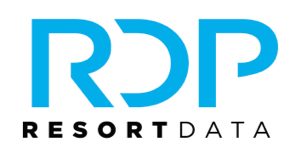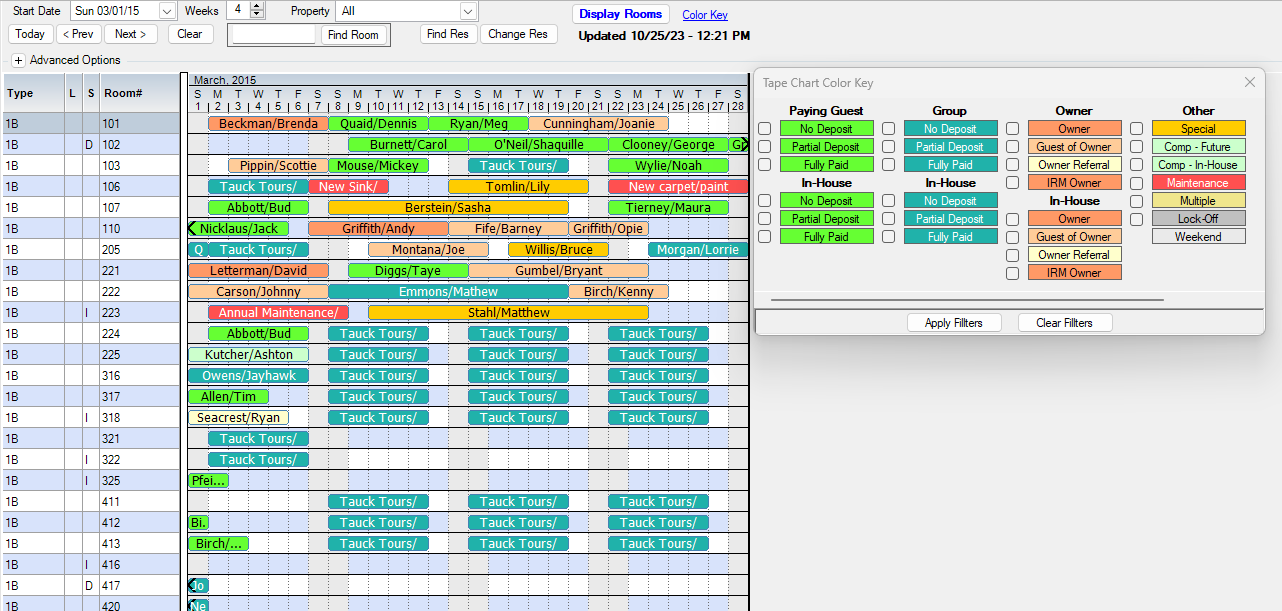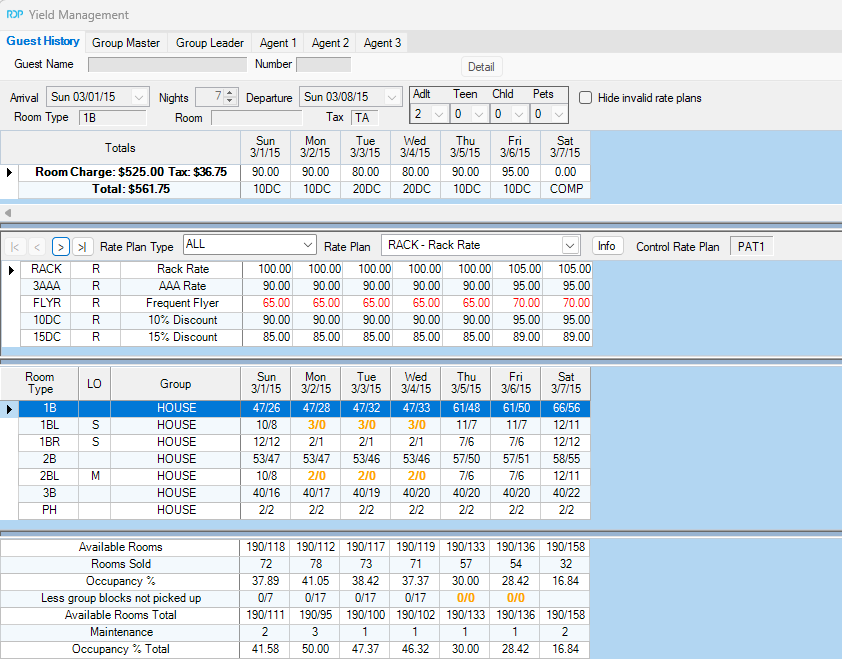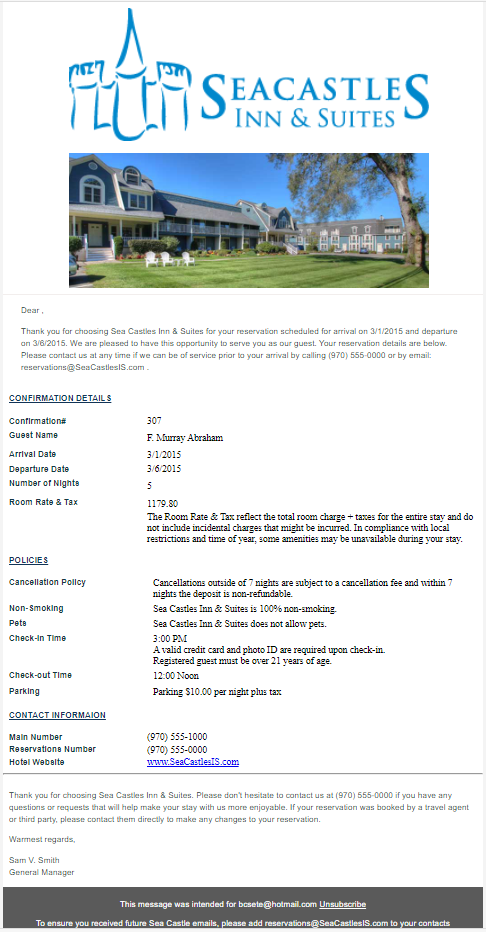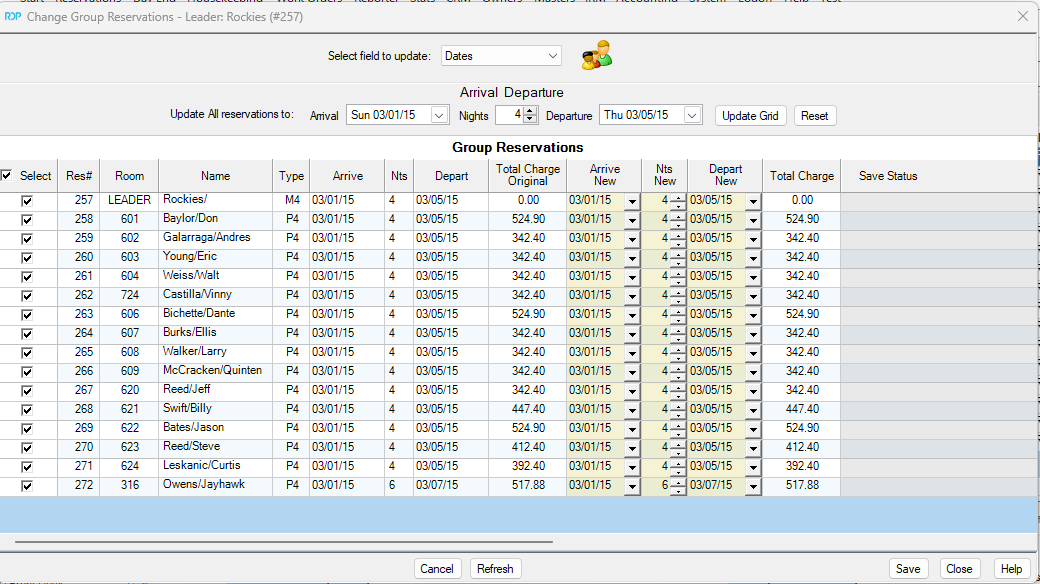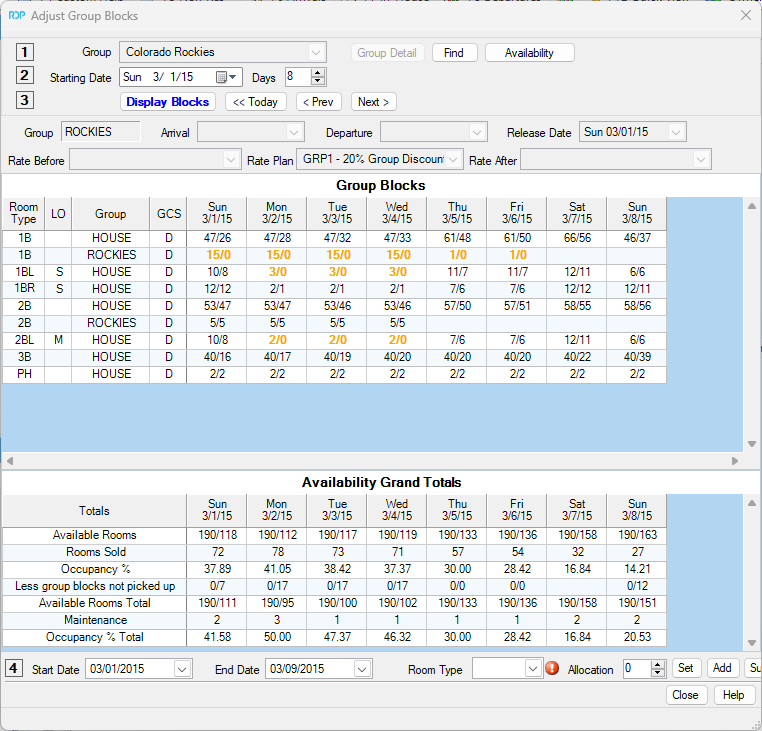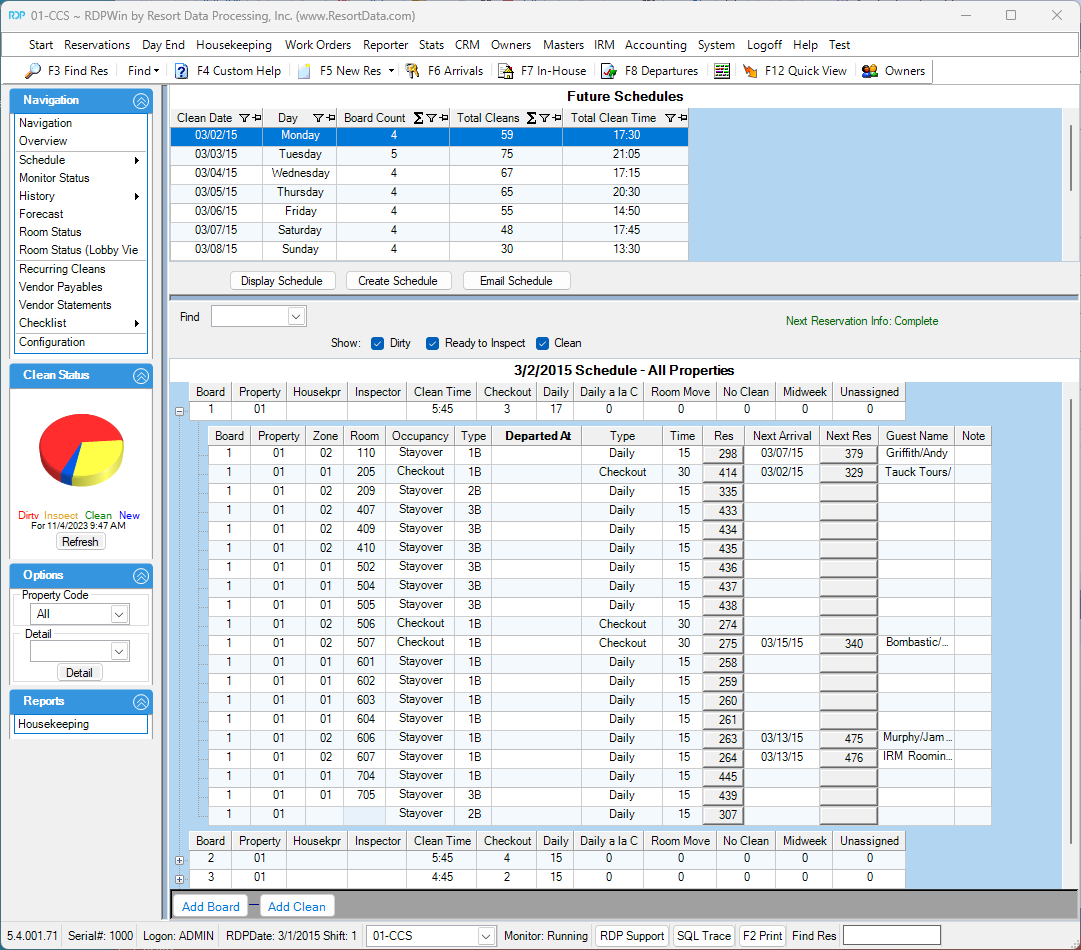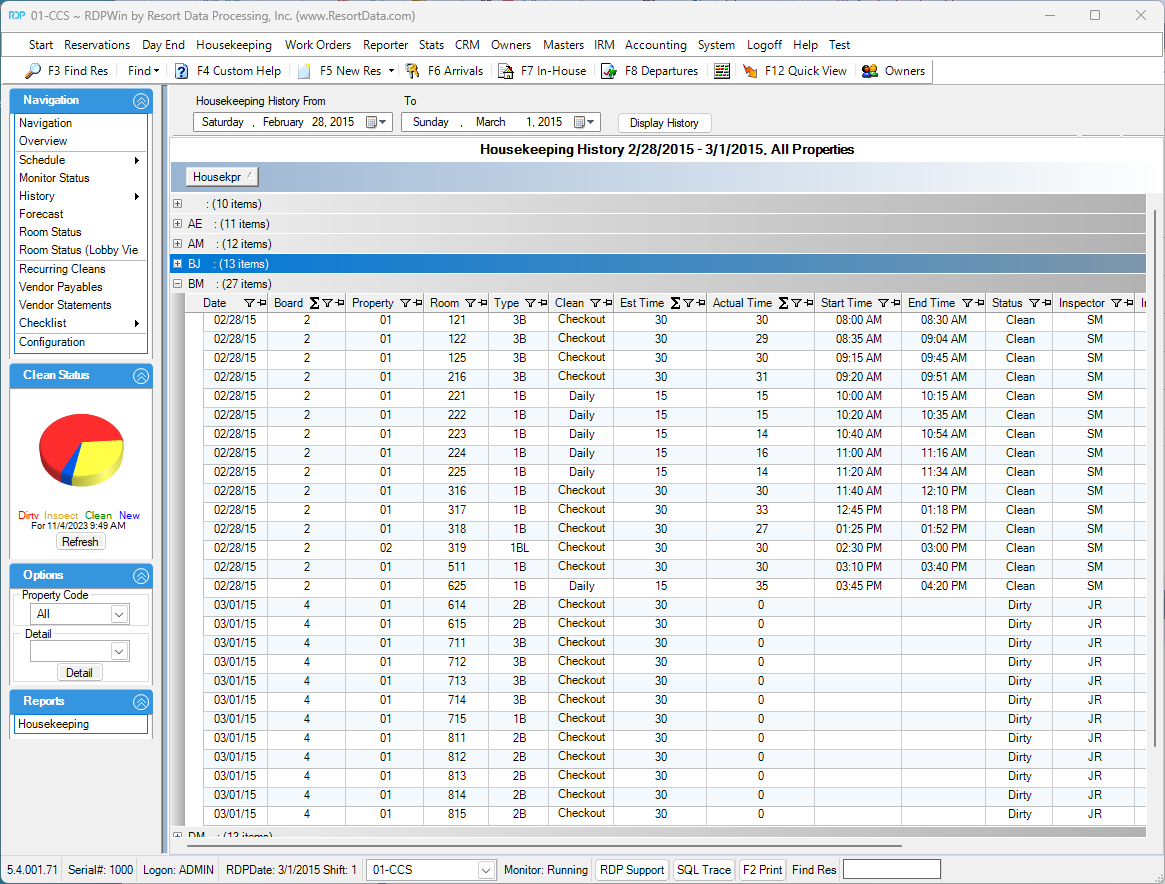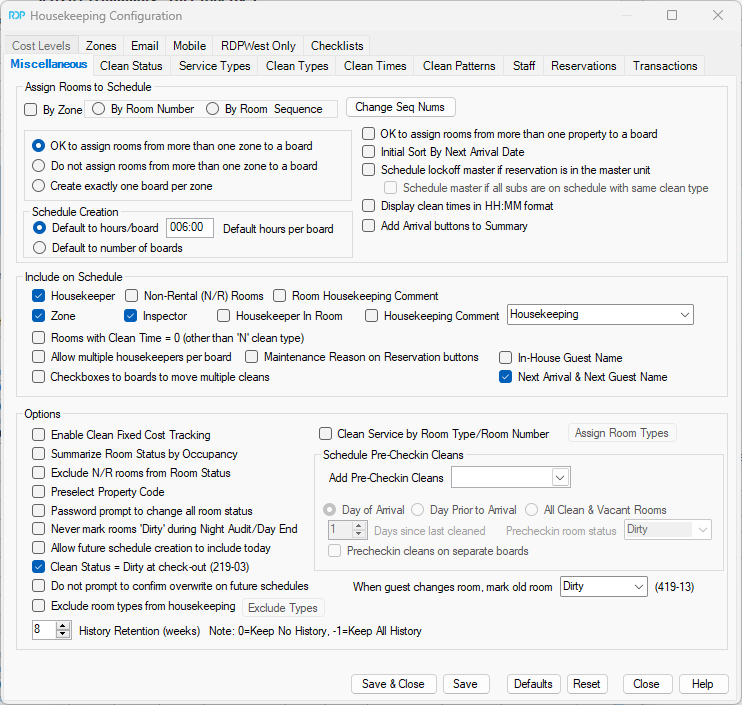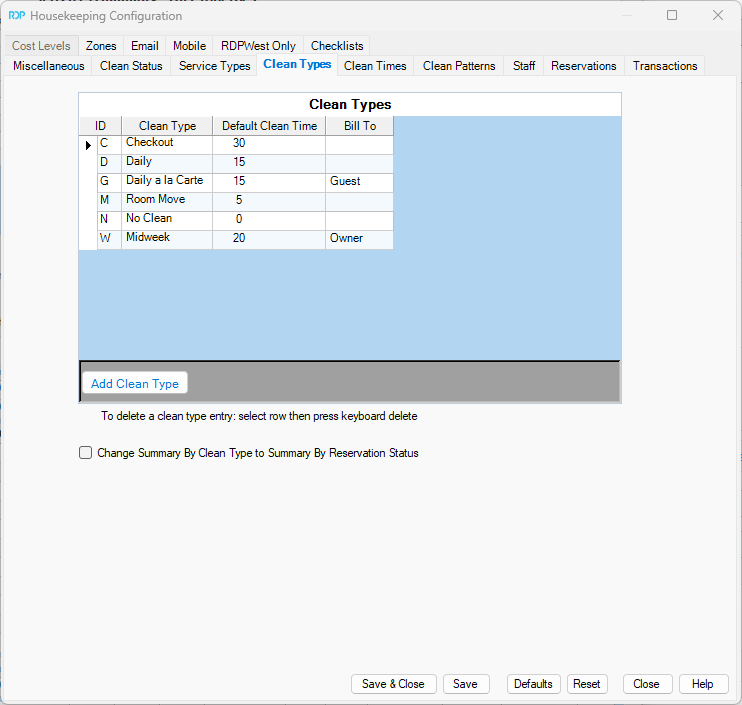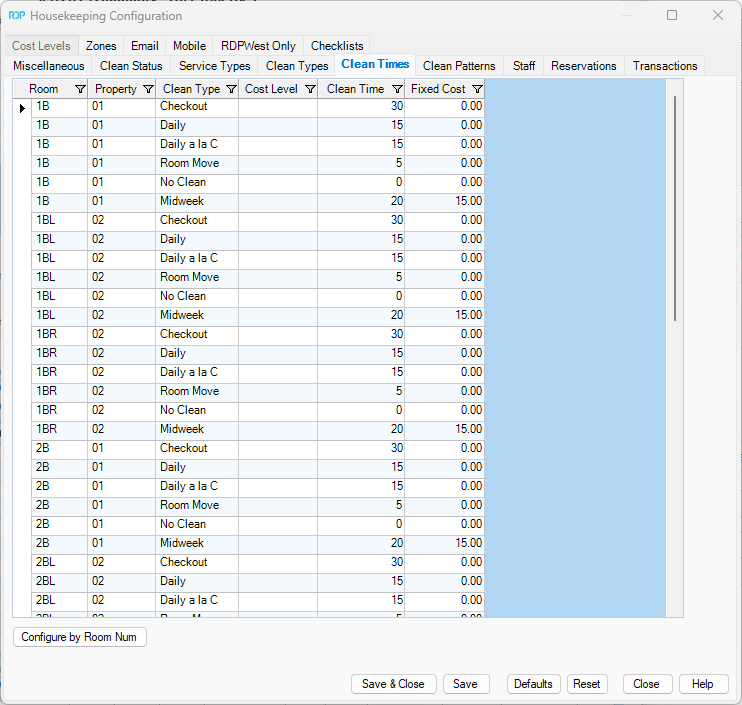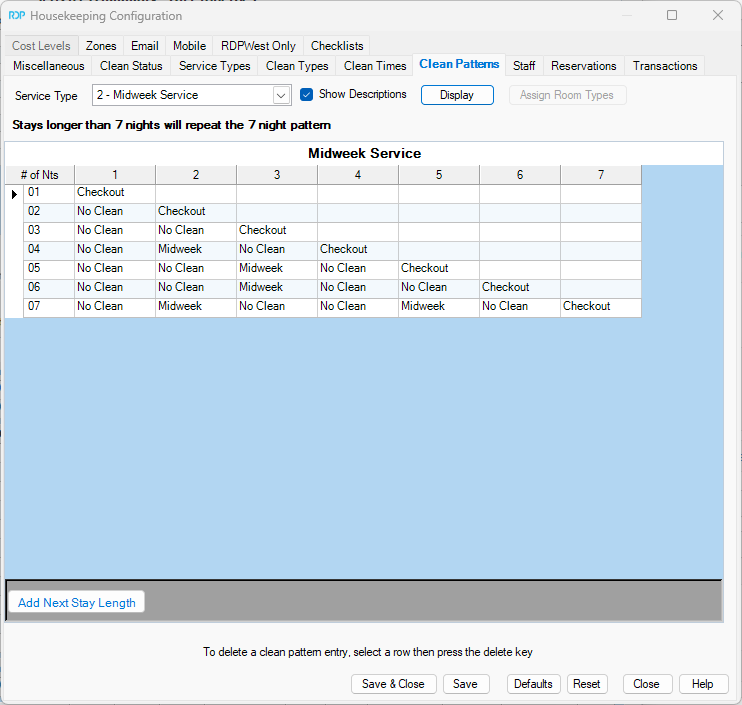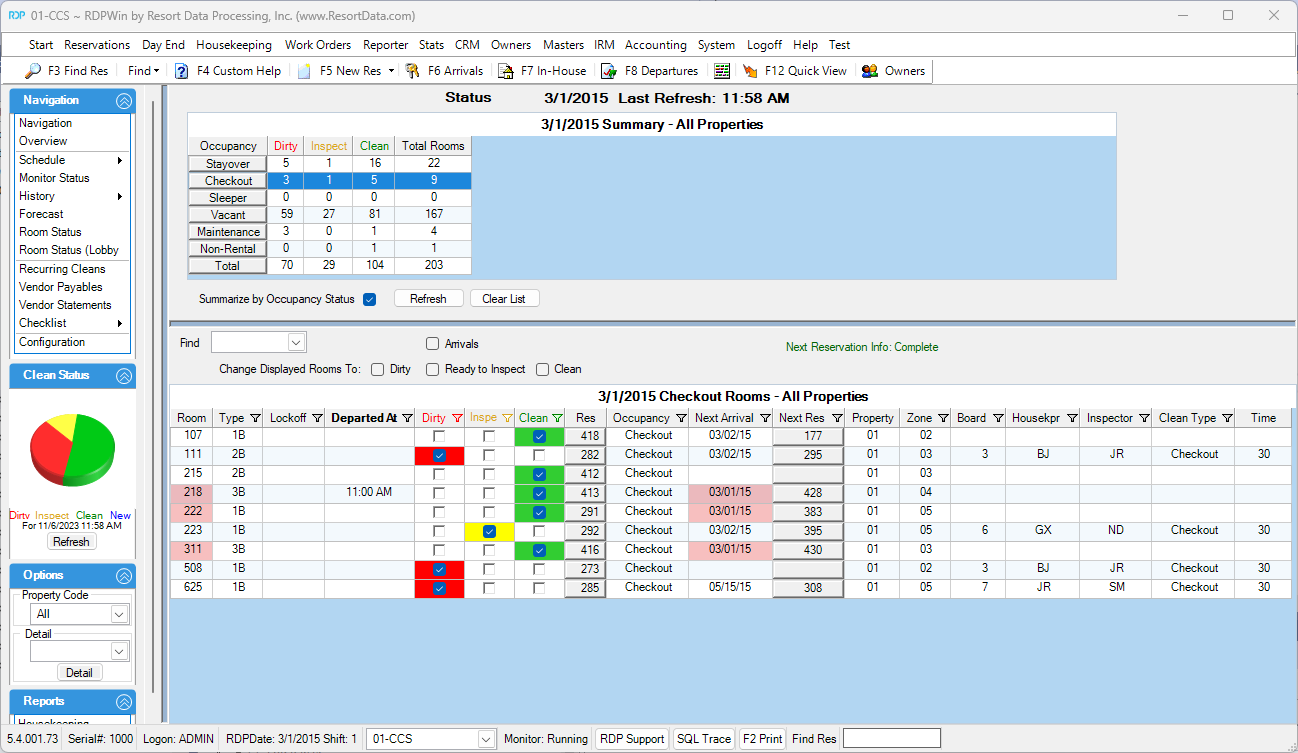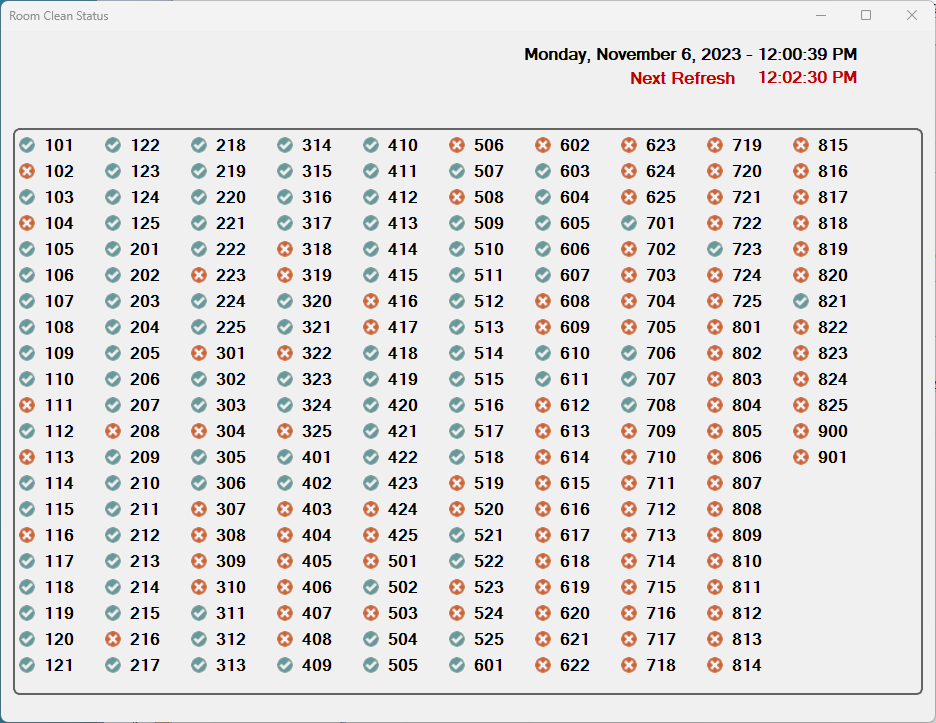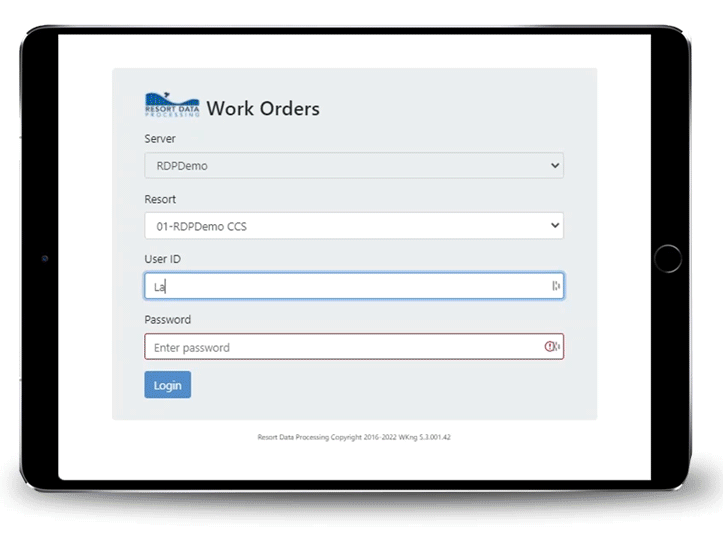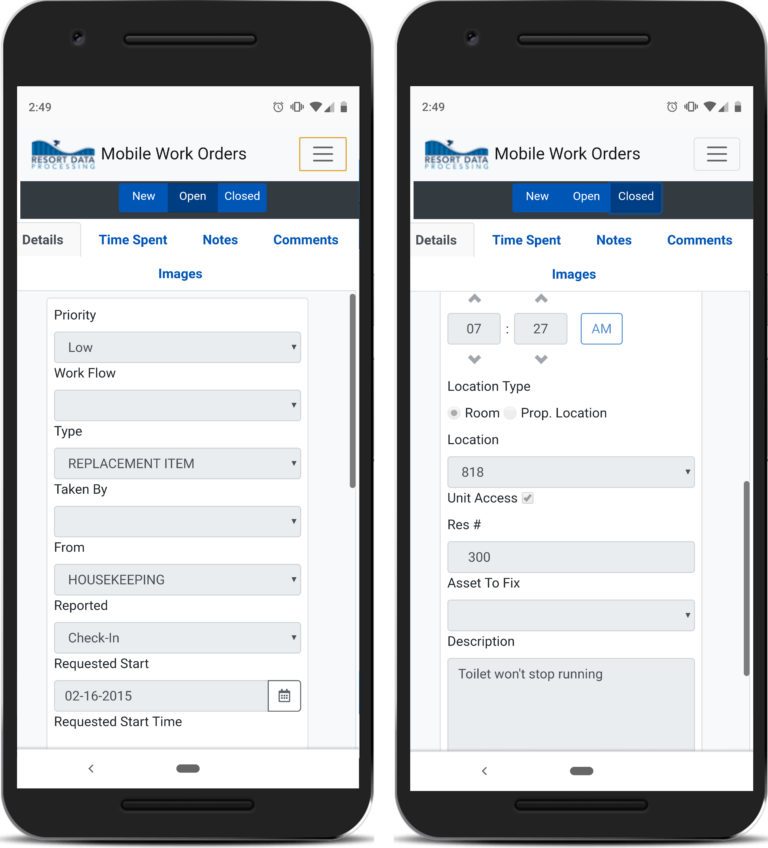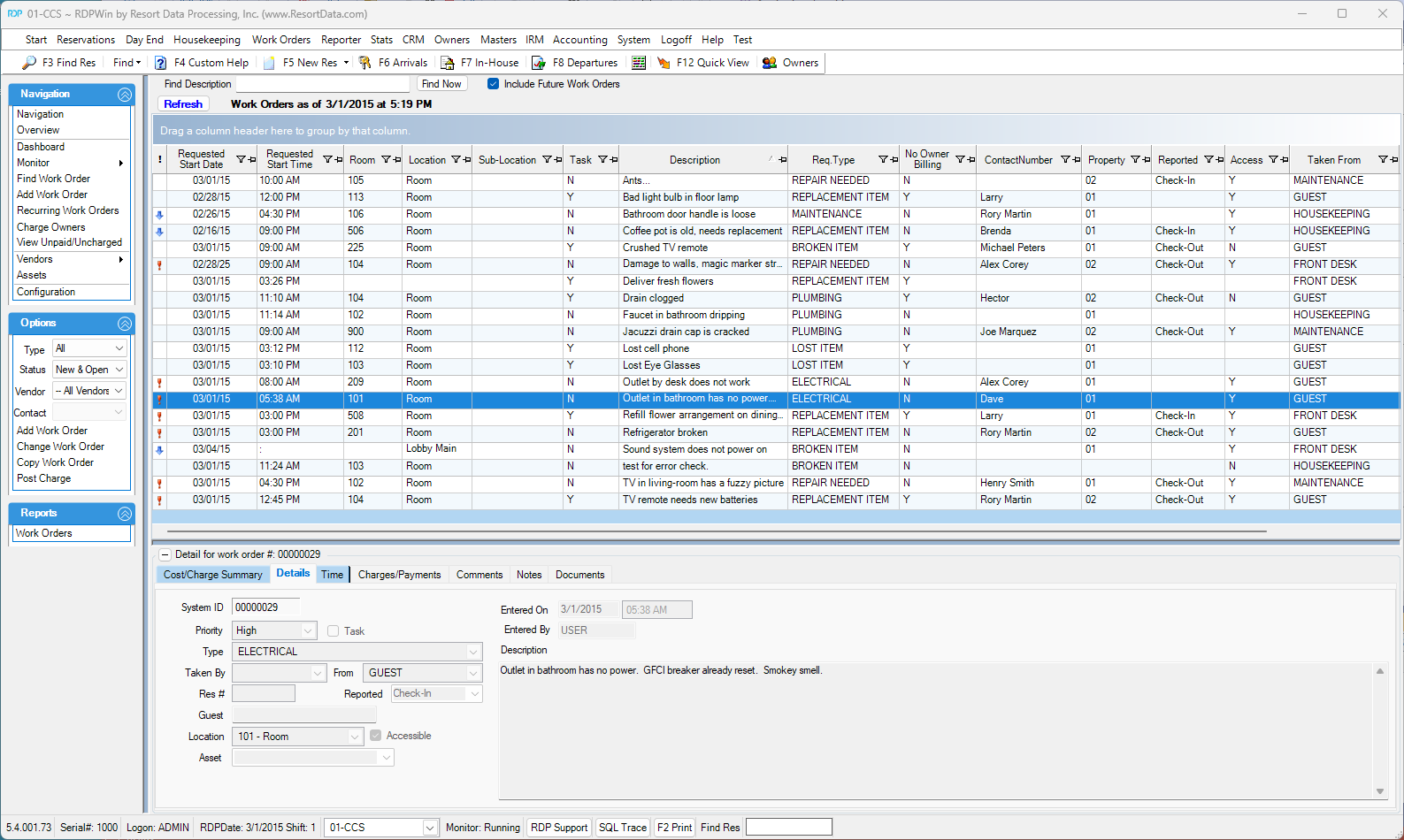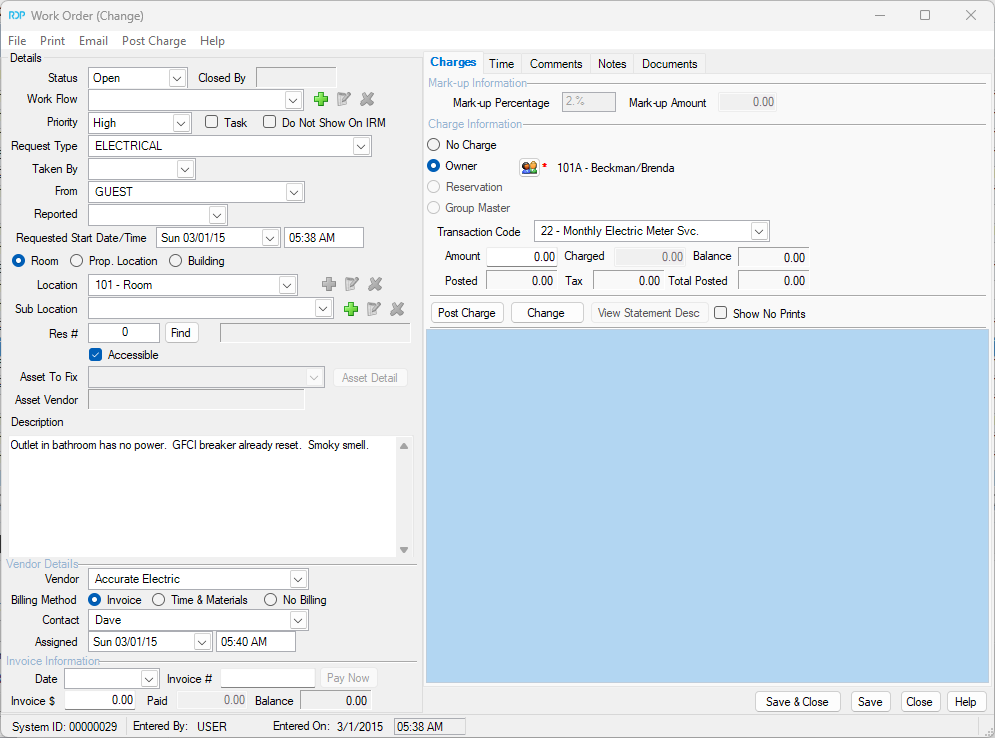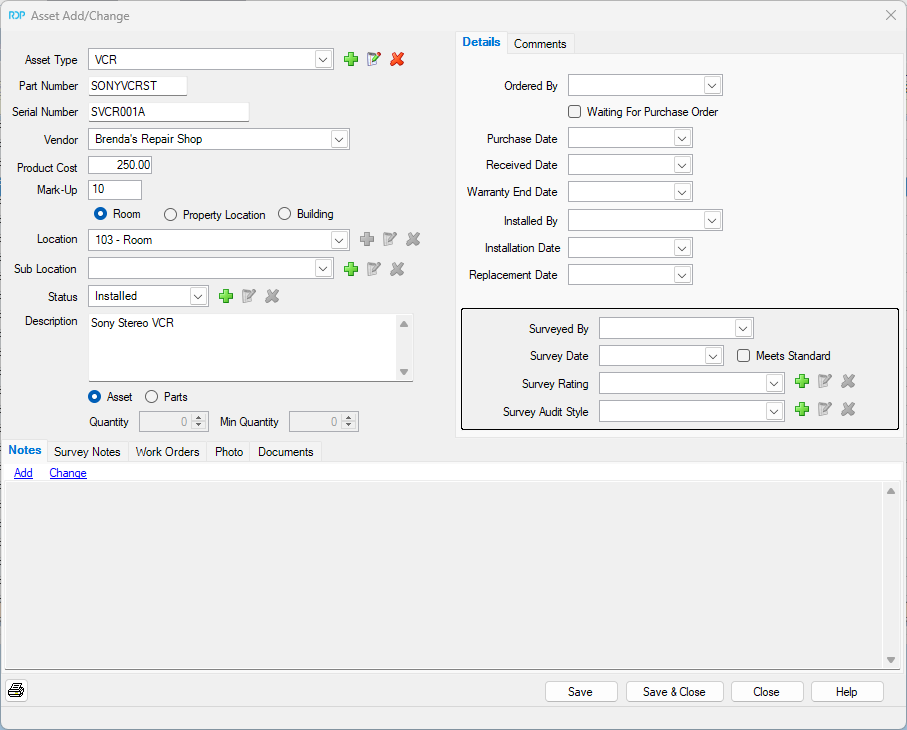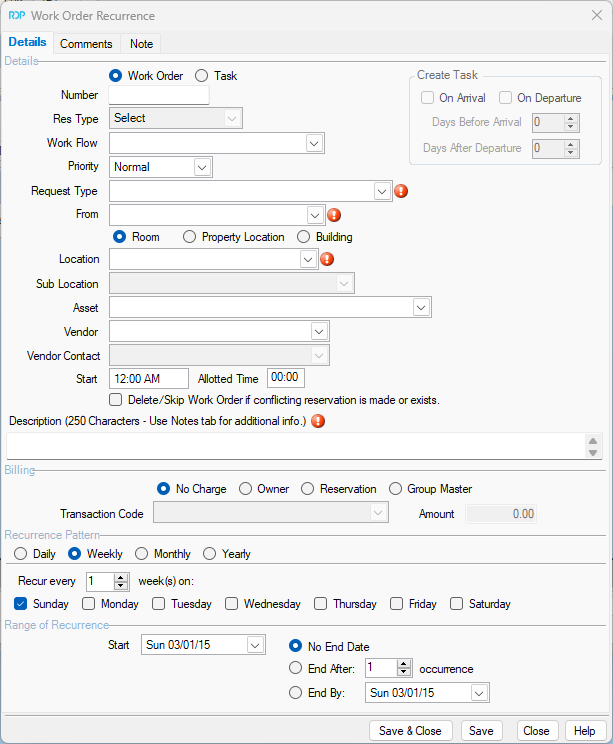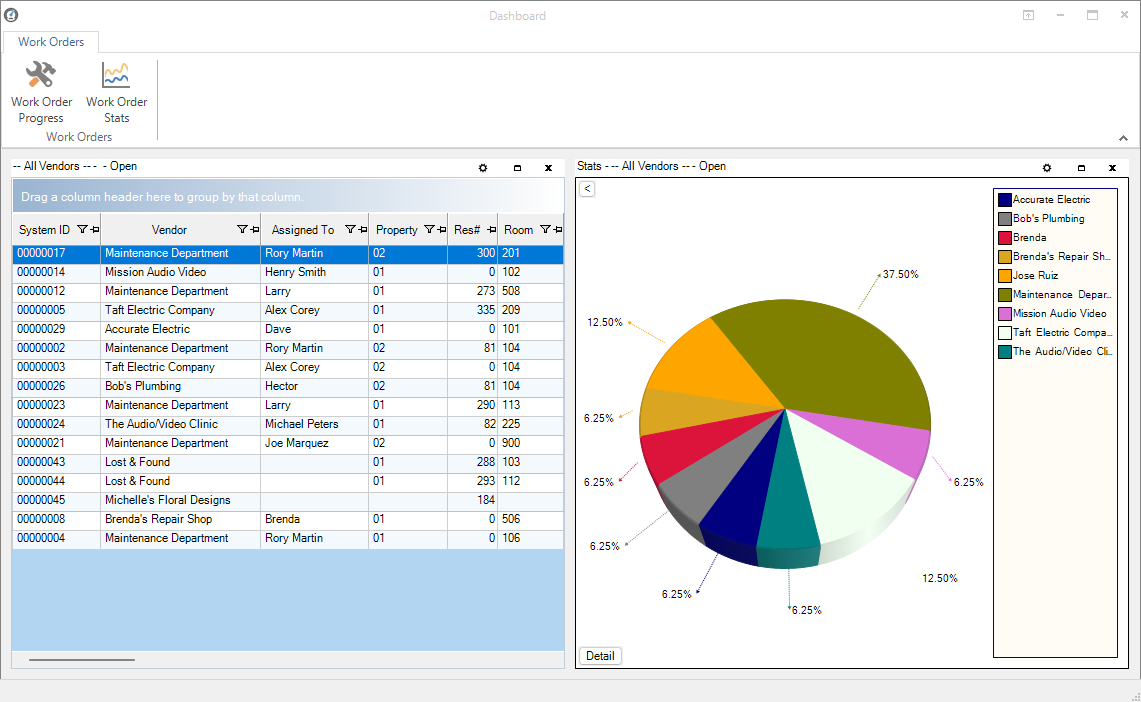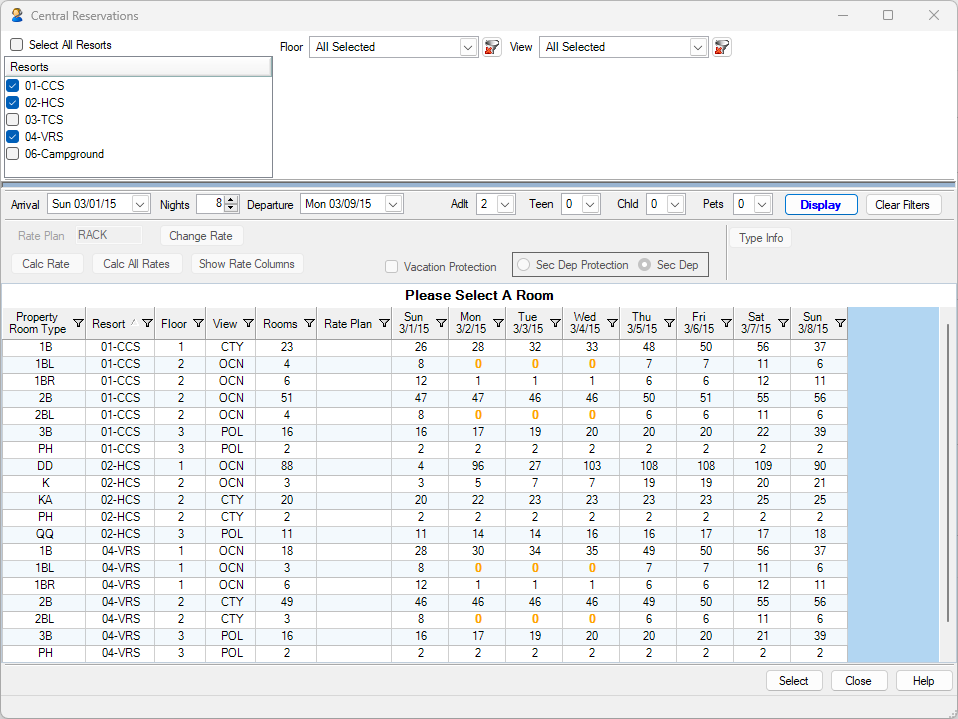Additional Reservation Charges
The system can automatically add additional charges to the guest folio. The charges below are configured by the property by specifying the description, amount, GL account, pricing, interval and more. These additional charges can be specific to RDPWin, IRM or both.
Daily Charges
A charge for items like parking fee, crib, golf cart, pet charge or any other add-on can be configured to be added automatically or on demand. Daily charges can be either a fixed amount or a price based on the day of year (season), room type or room number. They can be turned on/off at any time during the stay or configured to be active automatically upon making the reservation. If the number of nights changes, the additional charges will reflect the changes. Even though these are called Daily Charges, any interval can be used, like every 2 days, weekly, etc.
Other Charges
This category of additional charges are a one time fee for things like resort fee, destination fee, cleaning fee and anything else required by the property. Pricing can be a fixed amount, amount based on total room charge, total package charge or total charge including all additional charges with or without taxes. Other Charges can be specifically applied to only a paying guest, owner, guest of owner, owner referral, group, long term, special or comp reservation or any combination. These charges can also have a maximum cap price.
